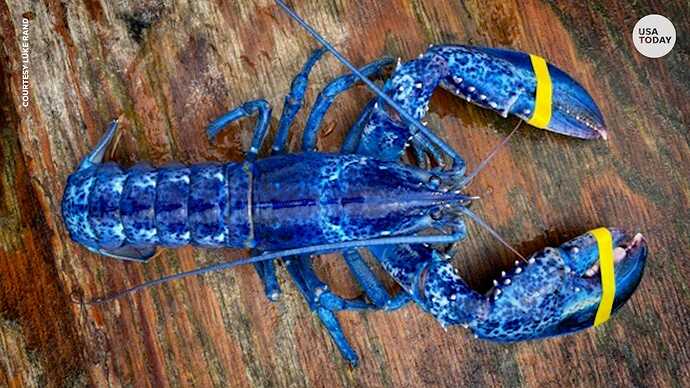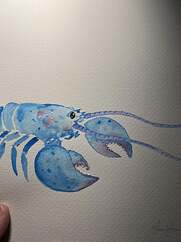How rare does a card have to be for you to consider it rare? I know this varies from person to person. Just curious what everyone thinks.
For me personally I would say the literal rarity (= number of cards out there). I know many people also call cards that are especially sought after rare, but when you ask me what my rarest cards are, I would actually try to estimate which cards had the lowest number printed.
I think thats 100% fair. I personally agree with you as well. Would you just look at the PSA pop report for an estimation?
It probably just does come down to limited distribution promos/trophies. You could extend it to cards whittled down by time.
Otherwise the whole product’s main selling point is artificial scarcity.
Of course if you’re opening packs, needing to open thousands of them to complete a master set or to find an individual card is not practical.
@RichmondReroll not really. PSA pop is also a measure of demand. If you didn’t already know what had limited distribution, it would be difficult to tell by looking at population alone.
And IDK if it should reside in this topic or I should start another but another question would be how much is ‘enough’ of a card? They clearly will not print a chase card to match overall demand, but what % or fixed number/ratio is it?
Only for cards of which significant amounts also get graded. So mostly I’d more or less go by my own estimation, since the PSA pop report wouldn’t be very helpful at e. g. determining whether a Polish Diamond and Pearl Holo or a Russian Furious Fists EX is rarer.
It has a star symbol in one of its bottom corners
Print numbers are the obvious answer. So really the only rare cards would be trophies. A subset would then be obscure UL print runs of things like L1/expedition that were used as promotional cards/handed out at events or the like and only certain set cards were included. Even after all this time info on some of these kind of ‘rare’ cards is unknown.
Another subset of things that are less rare such as L2 UL where the distribution isn’t really known but they certainly exist in higher numbers than L1/E1 yet some cards still have a 0 PSA pop report. Quite often that would be down to value. I’d expect if they were valuable a lot more would begin showing up.
And another subset which would include cards that received a normal print run or slightly less than normal such as English 1st Edition Base where the rarity is based on condition like the 120ish Charizards in PSA 10. The card itself isn’t rare as much as it’s rare to be in such good condition. I believe the e series Lugia falls into a similar category that print lines were a huge problem so it’s rare to find the card without and in PSA 10 condition.
There’s also certain language set cards that are extremely hard to find but as I don’t collect them I can’t recall off the top of my head although Korean 1st Edition and Spanish Neo comes to mind from reading threads on E4.
There’s many wiser people on here that could elaborate further and make much clearer points, I’m sure.
What I believe makes a card rare is how easy it is to find for sale, regardless of price.
I class first edition Portuguese jungle a rare
That one bulk card you need but can’t seem to find it anywhere…
I’d consider cards with under 1000 printed to be scarce (play promos, present campaign, stamped tropical wind) and cards with under 100 printed to be truly rare (art academy, trophy, finalist tropical wind, etc). I don’t consider any set card, even those with conditional rarity, to be “rare”.
For set cards, ‘rare’ is the most difficult to pull from those sets
For promos, ‘rare’ is very limited distribution with insatiable demand
e.g. eCard lottery Charizard, PLAY 7000+ pts, L-P Ho-Oh & Lugia, Super Rare Get Set Rayquaza/Giratina
For trophy cards, ‘rare’ is given
If you can’t find a listing for a specific card on eBay in 2024, it is rare.
On top of other factors. I can find an Illustrator on eBay, but it is still considered rare.
the little ![]() or
or ![]() at the bottom of the card
at the bottom of the card ![]()
Just piggybacking off of this comment, but I NEVER check a pop report. I personally cobsider it pointless. Mainly because Ive done my own research beforehand on what I like, and pop report can be skewed by resubmissions. I think alot of other collectors know this too.
The only acceptable answer right here
I think the word “rare” is more complex than people deep in the hobby like us give it credit.
It’s not purely about total supply. For example, if you ask people what the “rarest” Pokémon card is, you’d probably get the Illustrator, 1st edition Charizard and maybe Moonbreon as very common answers.
Yet I can name dozens of cards with less known copies than all three.
The concept of rarity combines the idea of a low probability event with a beautiful/desirable/unique outcome. For example, finding a blue lobster feels like a rare event because it’s something like 1:2M odds and the blue is so strikingly different and special (and yet there are colours with even lower encounter odds)
And yet this painting of a blue lobster is “rarer” (i.e. one-of-a-kind) than a real blue lobster. Yet it’s weird to think of it that way.
So what makes a card rare?:
- extremely hard to acquire
- extraordinarily desirable
Total print number or population is not the answer imo
That makes sense. Shows the difference between rarity and pure scarcity.
When I say it’s rare
For most cases pertaining to this hobby, I think you can sub in the word scarce. A lot of items the trouble isn’t if they exist, it’s a number of other reasons such as the existing owners do not want to sell, or show the item, etc. It’s not wrong to use rare in a lot of contexts, but where do you draw the line? That’s something that is simply a personal definition, in my opinion.


